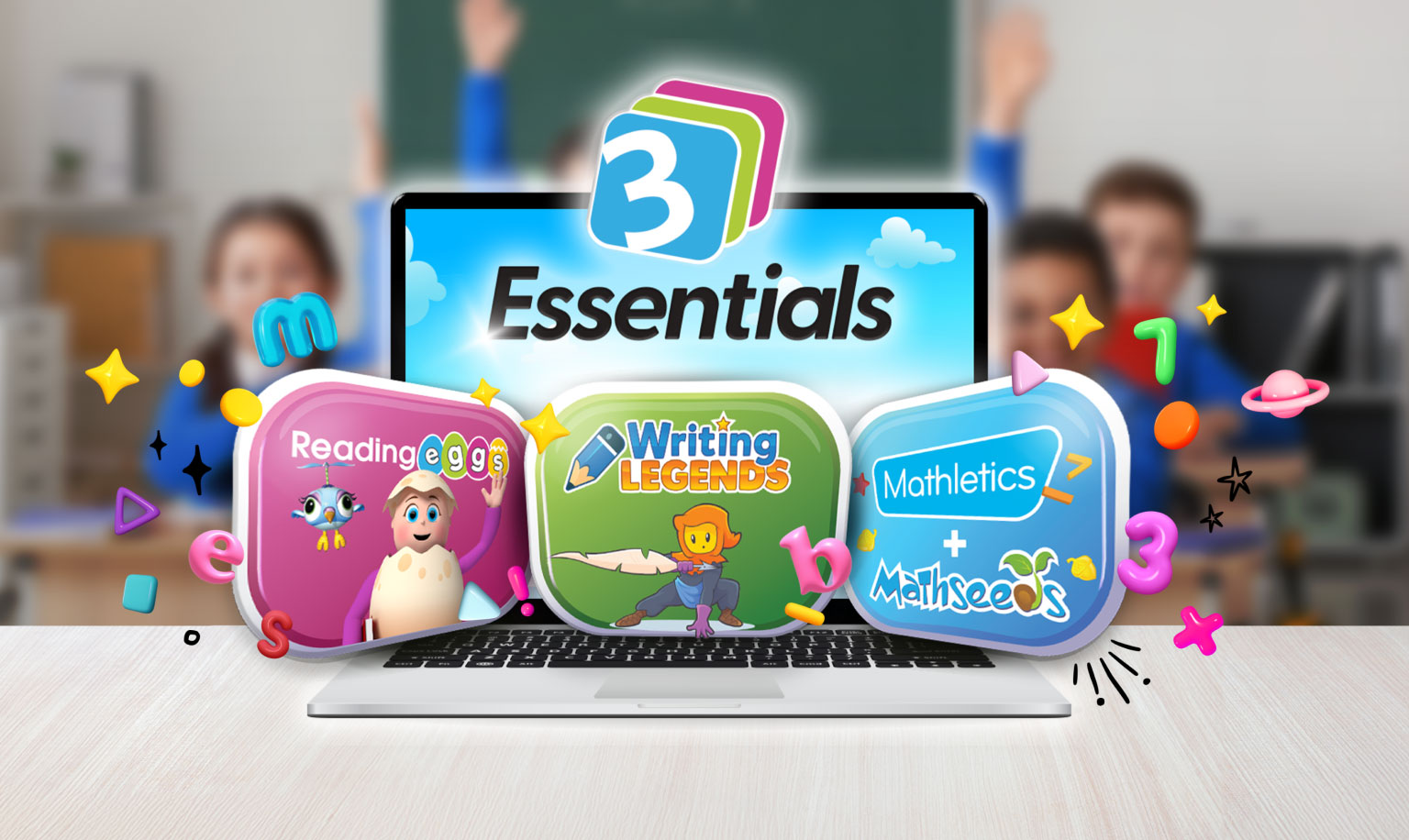
As teachers worldwide hastily cobble together resources and navigate an endless array of online teaching tools, one question remains:
How do we actually do online teaching?
No amount of free trials or complex digital tools will help.
What we really need are best practice strategies. Now.
Look no further. Here are the ten vital online teaching strategies that you need to bring dynamic learning out of the classroom and into the virtual world.
Choose your online teaching platform wisely
The site of your online teaching needs to be:
- Accessible: it’s easy for students and parents to use at home.
- Equitable: it has printable activities for students without reliable internet or device access.
- Communicative: so that students can talk directly to you as well as their peers. This might be via a live chat or a discussion board.
- Monitorable: so that you can stay informed of student activity and progress. Automated reporting is ideal.
- Sustainable: your online teaching platform needs to be a realistic long-term solution that doesn’t burn you out with undue amounts of time and effort.
What online teaching tools are out there? You can choose from:
- Learning Management Systems (LMS): your school might be using one of these already, such as Blackboard or Moodle. They form a convenient base or ‘homepage’ for all your learning content.
- Curriculum-aligned online programs such as Mathletics or Readiwriter Spelling. A great option for homework, assignments and individual student practice due to their automated reporting.
- Cloud-based software such as Google Classrooms or Microsoft OneNote. These are perfect for real-time communication and collaboration.
Remember: you don’t need to find a single online teaching tool that does it all. You can use a combination of them in sync.
Just make sure that your students know how to use your chosen tools.
Need more help creating an effective online teaching platform? We’ve got the details here.
Create a parent–teacher partnership for online teaching
Parents play a vital role in online teaching. They can be the motivators, monitors, and aides for your students while you are on the other side of the screen.
But you have to actively involve them first. Let them know what to expect from the online teaching period, and tell them how they can help.
Send home a parent support package. In this you can include:
- an overview of what content will be covered during the online teaching period
- a list of clear strategies that parents can use to support learning at home
- login details and access information for any online teaching tools being used.
Most parents will do what they can, but keep your expectations realistic. It helps to think of parents as assistants, as opposed to classroom teachers in their own right.
Keep them updated on their child’s progress too. You will leave them feeling confident that their child’s learning is still on track, even if the classroom has been swapped for the kitchen table.
Discover more strategies for positive parent communication here.
Deliver engaging online teaching content across multiple modes
Diversify your online teaching strategies to include a mix of text, sound and imagery. It’s far more engaging than a packet of worksheets.
Here are some options:
Scheduled live classes via Zoom or Skype
A live class once a week brings back the engaging dynamic of the classroom. Use the time to kickstart a discussion or delve into some new and exciting content.
Video lectures
You can put as much time as you like into recording the content-heavy part of your lesson, and students are able to watch it back as many times as they need.
Set activities with gamified online learning tools
Curriculum-aligned programs such as Mathletics and Readiwriter Spelling are designed to keep learning engaging no matter where it’s taking place. They also come with automated reporting and tailored learning journeys for each student.
Start a class blog
Assign groups or individuals to post blogs on different aspects of the topic. It’s a great strategy for going into depth.
Structure your online teaching to create a sense of routine
Your students should come to see online teaching as a regular and predictable part of their day. Use the following strategies to turn online teaching into ‘the new normal’:
Create specific places for different learning resources
Your students should know exactly where to access:
- the teaching sequence/unit plan
- resources: videos, links, and printable handouts
- activities and assignments.
With everything in its right place, they’ll be able to find their way around the virtual classroom with ease.
Create a flexible timetable
Set different days for different subjects, or even different instructional strategies. You might upload a video lesson on Monday, set individual activities for Tuesday and then regroup for a discussion on Wednesday.
Remember: different families will have different home schedules. Keep it flexible instead of trying to replicate a regular school day.
Set weekly goals and targets
Encourage your students to set goals for each week. This might be:
- writing a new chapter of a story
- setting a new personal best with a practice activity
- achieving a certificate or reaching a new level in a gamified program
- producing a journal entry that reflects on their week’s learning.
Engage with students daily
Take the time to connect each day by providing feedback, uploading some new resources, or even just sending a hello message. Your continued presence will encourage students to log on each day.
Let your students talk to each other
Remove the isolation of online teaching by giving your students the opportunity to communicate often, and not just about classwork! Here are some strategies:
Discussion boards and forums
These are an effective online teaching tool, but you could also set up an ‘off-topic’ board for students to post about whatever is on their mind.
Live chat
Chats allow you to bring the real-time discussions of the classroom into online teaching. Make sure you set some guidelines to ensure everyone is heard.
Zoom/Skype
Setting up a Zoom/Skype lesson will show your students that their peers are only a few clicks away. They can use these platforms in their own time too.
Schedule a weekly show and tell
This could be done via video or it could be a simple message with a photo. It’s a great strategy to keep your students connected and feeling close to each other.
Peer review activities
When your students share work online, have their peers comment on it. It sends a message of support and community.
Keep the relationship with your students strong
You might be separated but your students still need their teacher. Here are some strategies for keeping the bond alive and well in online teaching:
Upload a daily ‘welcome to class’ video
You can explain the plan for the day’s learning while staying connected. It only needs to be a minute long, but never underestimate the value of making yourself visible.
Record individual student feedback
Your voice will make your feedback all the more personable and meaningful.
Check-in with students who go AWOL
Online teaching can make it easy for students to slip through the cracks. If you notice that a student hasn’t been participating, contact them directly to see if you can help.
Share your own experiences
Some self-disclosure will make your students feel all the more connected to you. Introduce them to your pets, share a story from your week, or show them a hobby that keeps you busy at home.
Keep the tone personable
Be warm and enthusiastic when you’re writing to your students. Keep things vibrant with GIFs and emojis so that they get a sense of your voice and personality.
Be kind to yourself
Online teaching comes with its own challenges. It’s easy to feel alienated from your students’ learning or to end up answering emails around the clock.
Put some strategies in place to support your own wellbeing. This might be setting ‘office hours’ for parent and student contact, scheduling a loved pastime for the end of the school day, or creating a comfortable working-from-home space.
Sometimes it will feel like you just can’t do enough, but shake off the self-doubt. Keep being the teacher who listens, guides and supports. You’re needed as much as you ever were.
Need more help with distance and online teaching?
Check out our blogs on online assessment strategies, online teacher-student communication, or read a step-by-step breakdown of three online instructional strategies.











